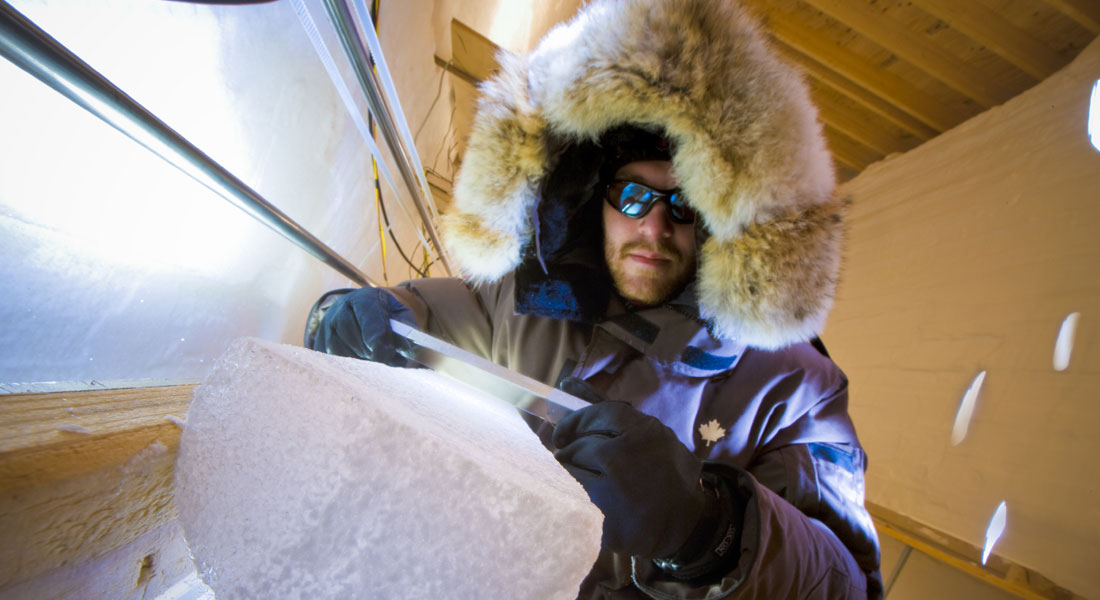The highest Greenland temperatures in 1000 years
Recent high temperatures on the ice sheet in central and northern Greenland lies are unique, when compared to 1000 years of reconstructed climate conditions on the ice sheet. This is the main message of a new scientific study based on numerous updated ice core data.

The climate of the last 1000 years reconstructed
In the last decade ice core researchers from the Alfred Wegner Institute and the Niels Bohr Institute have collaborated to update existing ice cores with information from the most recent decades. Hence, several missions have been flown to remote locations on the Greenland ice sheet in order to drill new cores at locations where ice cores had been drilled some 30 years ago.
This has been done in order to get ice and snow samples from the latest decades.
Comparing the water isotopic composition in the recent samples with similar records reaching a millennium back in time it is possible to reconstruct climate from year 1000 all the way up to 2011.
The new temperature reconstruction shows that the most recent decade in the cores are some 1.5 degrees warmer than the long-term average.
This warming is unique in the 1000-year perspective provided by the ice cores. Hence, it is clear that the signal of global warming has reached even the remote ice sheet locations in central and northern Greenland.
Rising temperatures and increase in meltwater from the inland ice sheet go together
The new study goes on to compare the reconstructed Greenland temperature evolution to melt-water run-off from the Greenland ice sheet, showing that temperatures and melt is closely related.
Hence, the increase in melt observed in recent decades is also likely to be unique in the past 1000 years.
Rising sea levels is the consequence
Associate professor Bo Møllesøe Vinther, who participated in the study describes its significance:
“The close relationship between higher temperatures and increasing melt of the Greenland ice sheet documented in the study, is of great concern given that Greenland warming is projected to continue due to continued emissions of greenhouse gasses.
Melt from the Greenland Ice Sheet must thus be expected to contribute more and more to sea level rise in the future”.
The new study has been published in the scientific journal Nature.
Link to the article: https://www.nature.com/articles/s41586-022-05517-z
Contact
Bo Møllesøe Vinther, Associate professor
Email: bvinther@nbi.ku.dk
Phone: +45 20644144
